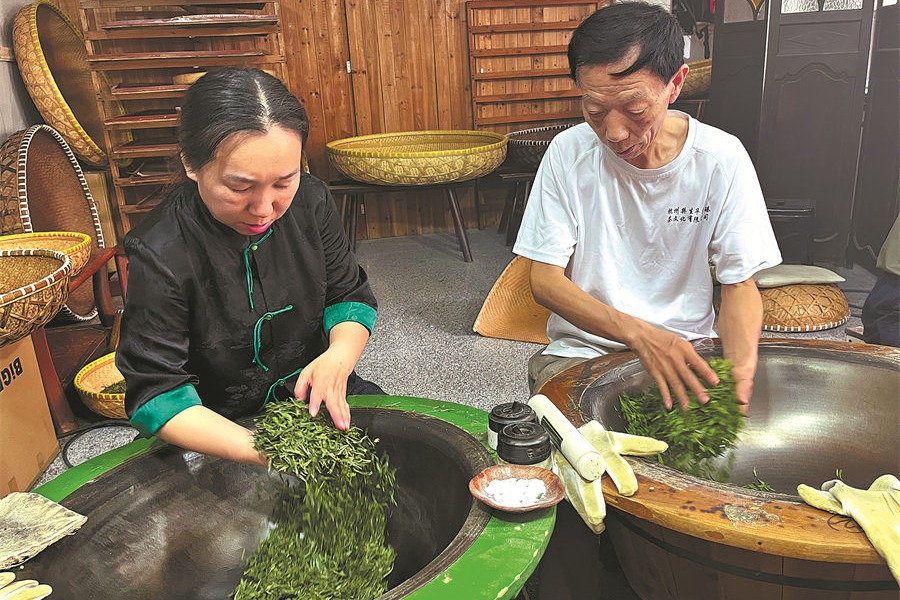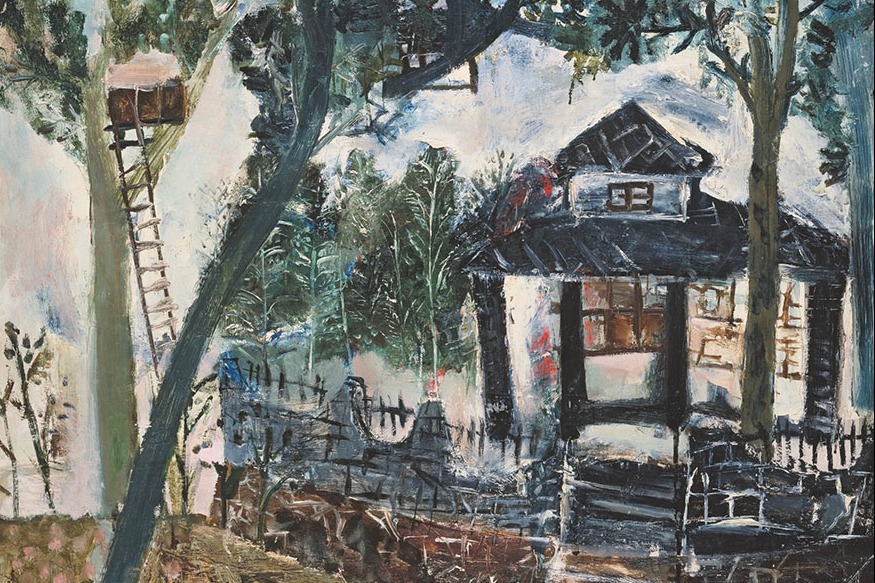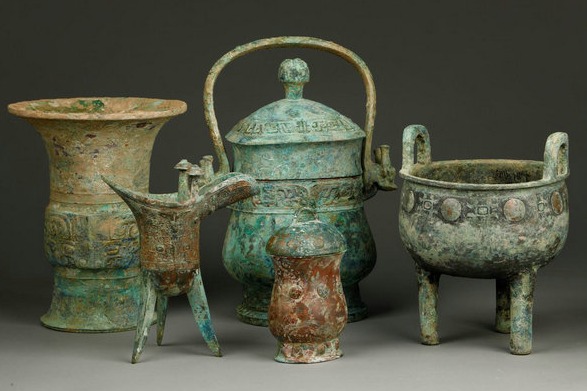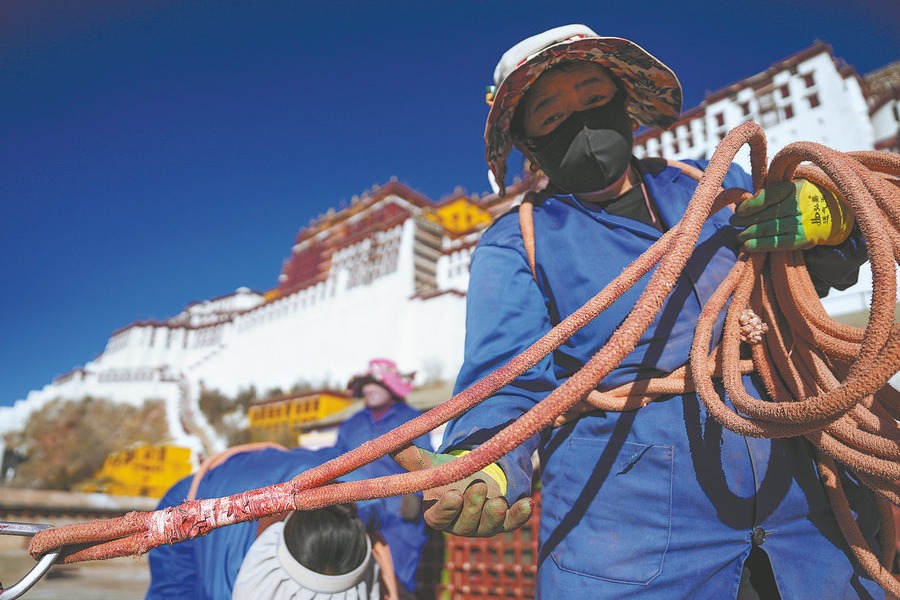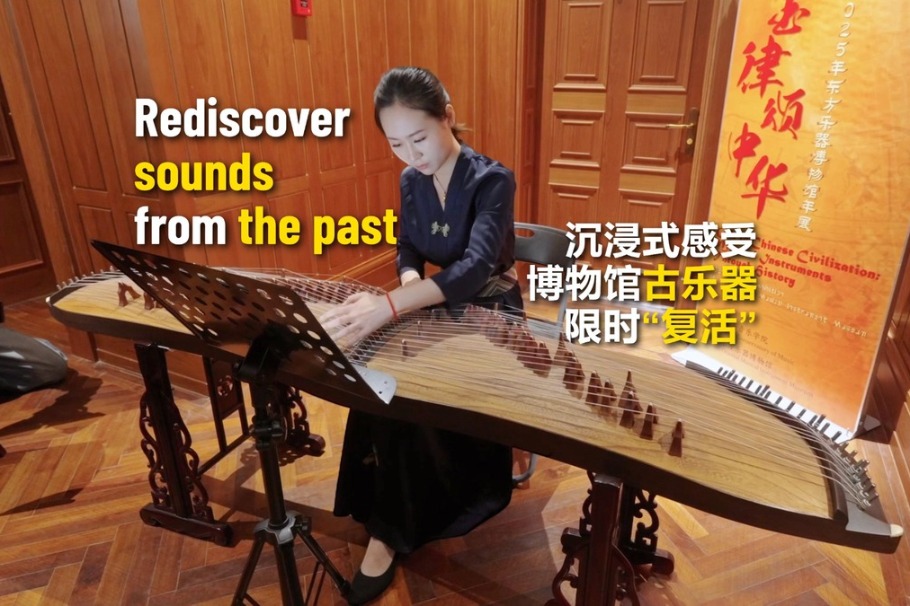Exhibition expounds on 'vision and verse' in Chinese art


"As there happened to be a volume of Du Fu's poetry on the table, I selected one suitable couplet for inscription on each of my landscapes," wrote Wang Jian, a much celebrated painter living in 17th-century China, on the final page of an album of pictures he painted for a longtime friend.
Wang also wrote that he had genuinely enjoyed the friendship since the days "when we were young and vigorous".
For Joseph Dolberg, an expert on ancient Chinese painting from New York's Metropolitan Museum of Art, the painted album, with each page in the style of an old master who had come before Wang, is a priceless item of art.
It is also a testament to the friendship between two deeply cultured men who shared not only a passion for art, but also pain and suffering.
Moreover, it provides a partial understanding of a phenomenon in Chinese art history.
"When painters sat down to paint in ancient China, why were they so often painting poetic themes?" asked Dolberg, who has attempted to answer that question through an exhibition titled Vision and Verse: The Poetry of Chinese Painting. The exhibition is on at The Met Fifth Avenue galleries in New York and features 90 works drawn almost entirely from The Met's collection.
Although Wang made his choice of poems sound purely accidental, in reality this may not be the case, said Dolberg.
"Based on my unscientific observation of Chinese painting history, Du Fu (712-770) is the most often inscribed poet from the Tang Dynasty (618-907)," he said, referring to an era in Chinese history when poetry writing is believed to have reached an artistic pinnacle.
Around 1,150 poems attributed to Du that have survived to this day offer proof to the immensity of his oeuvre, which a latter-day painter could "go to and grab whatever he wanted… to deepen and expand his viewer's pictorial experience and imagination", to quote Dolberg.
But that number alone can't explain it all. "The prestige of Du Fu the poet started to grow posthumously, during the final century of the Tang Dynasty," said Zhang Yinan from the National Library of China who specializes in ancient Chinese poetry.
"It reached such a height in the succeeding Song Dynasty (960-1279) that Du Fu became a cult in himself, commonly worshipped by educated members of society, some of whom, Su Shi included, had used brushes to write and paint," said Zhang, referring to the Song Dynasty polymath who was in turn immortalized by his own words.
This was despite — some might say because of — the fact that for a large part of his life, Du had endured, if not outright anonymity, then repeated rejection and constant poverty. "Du's personal travails had certainly struck a strong chord with those who were subjected to similar experiences at one point or another, and who constituted the bulk of the literati group in pre-modern China," Zhang said.
In another painting on view at the museum, a speck of a figure stands atop a low cliff facing the magnitude of nature. The painter, from the 17th century, adorned his fanned-out work with two lines from a Du poem that goes: "The emerald cliff catches the breeze, a lone cloud thin; Red maples, their backs to the sun, ten thousand trees dense."


















